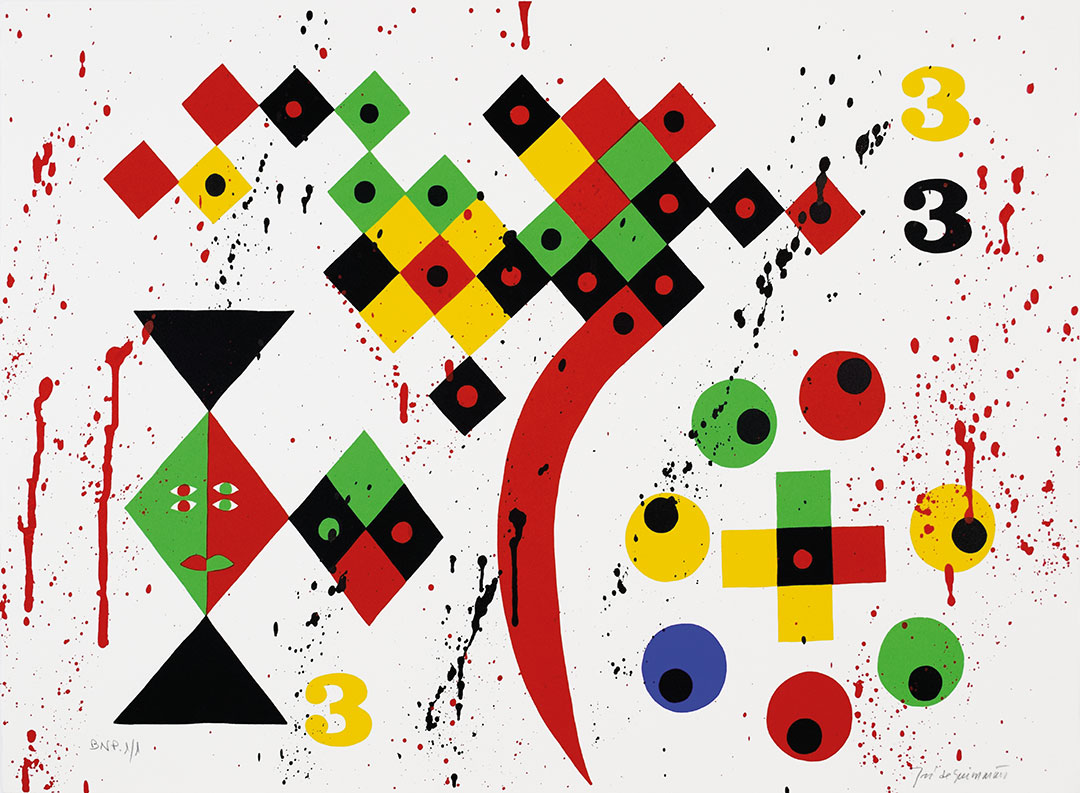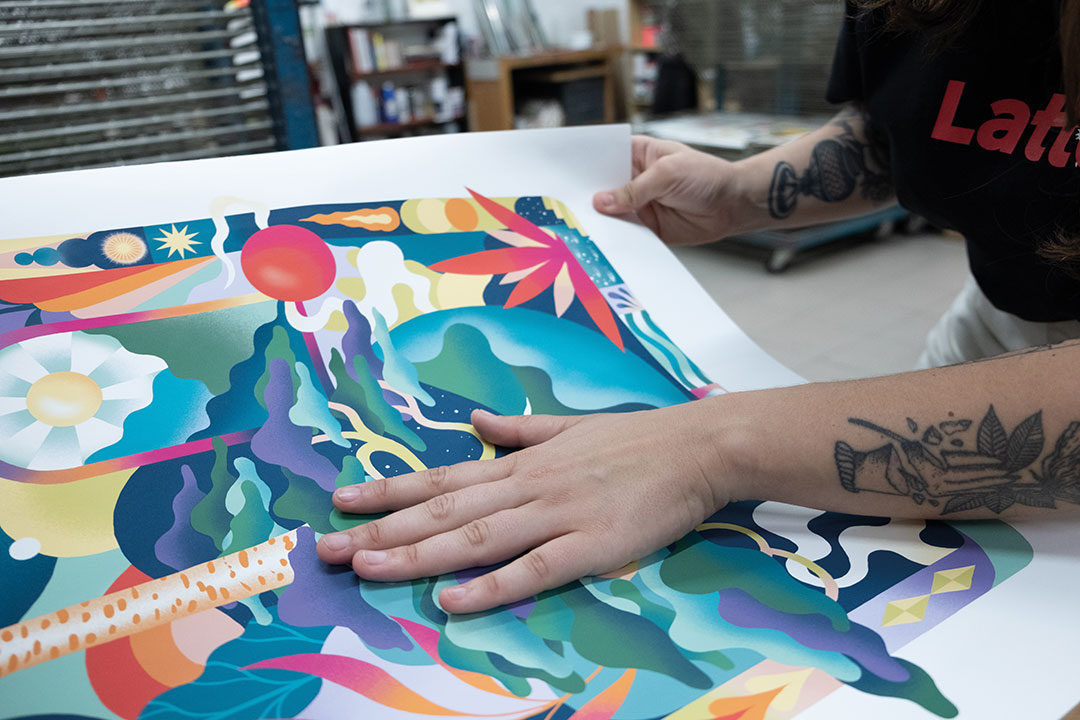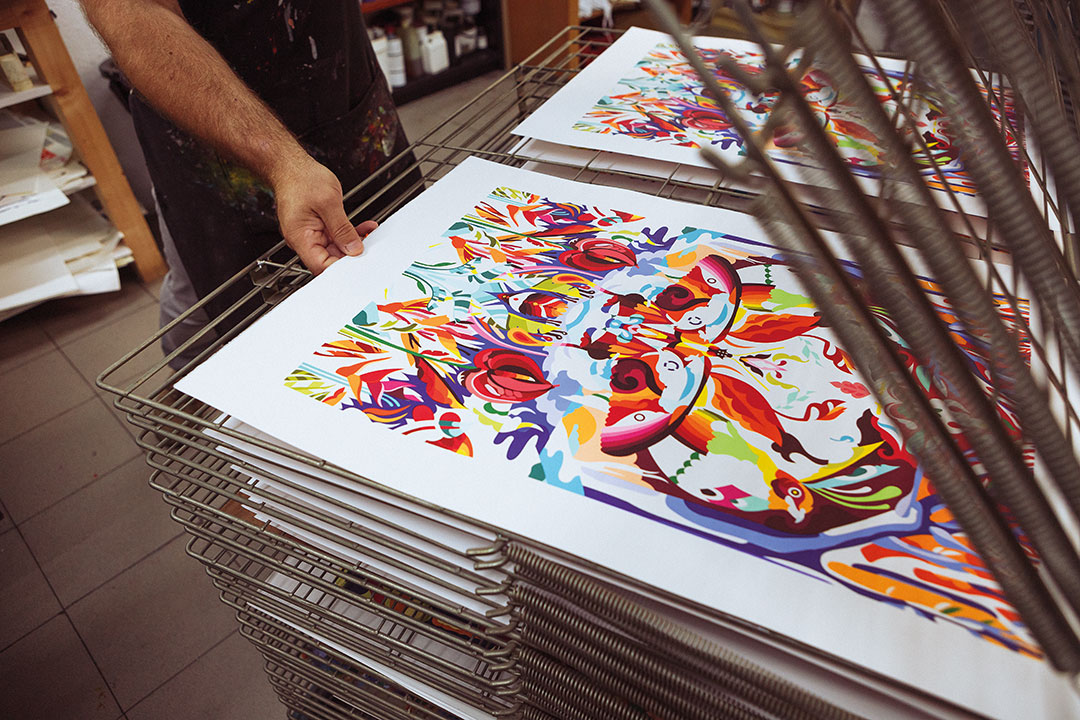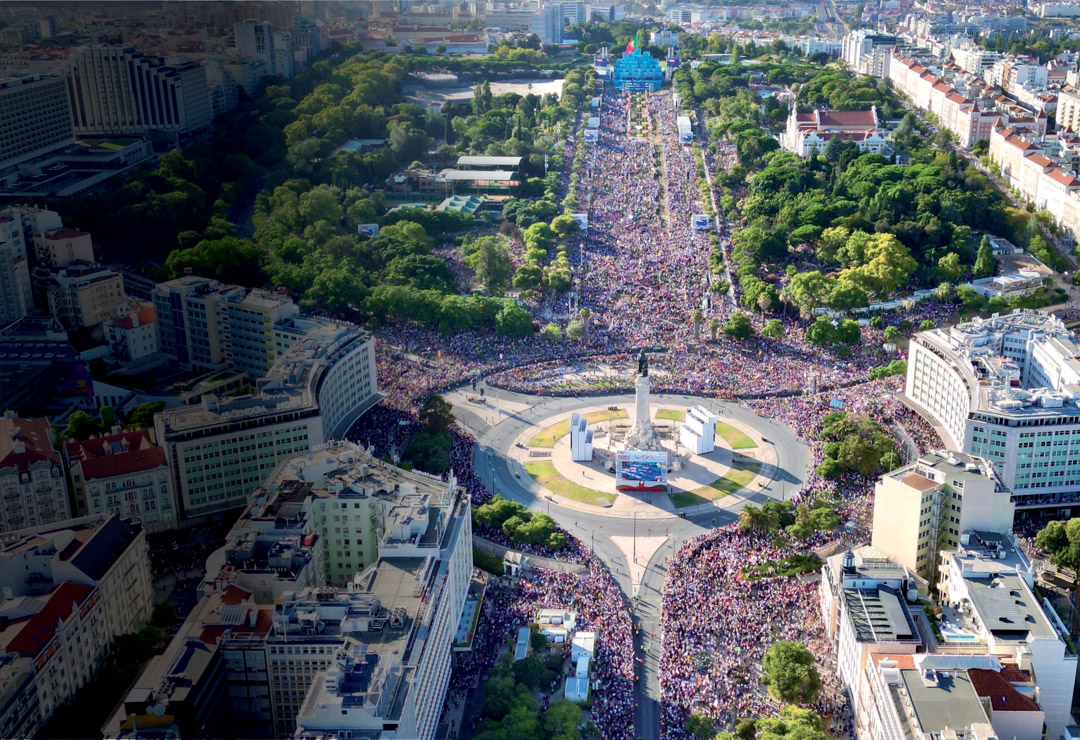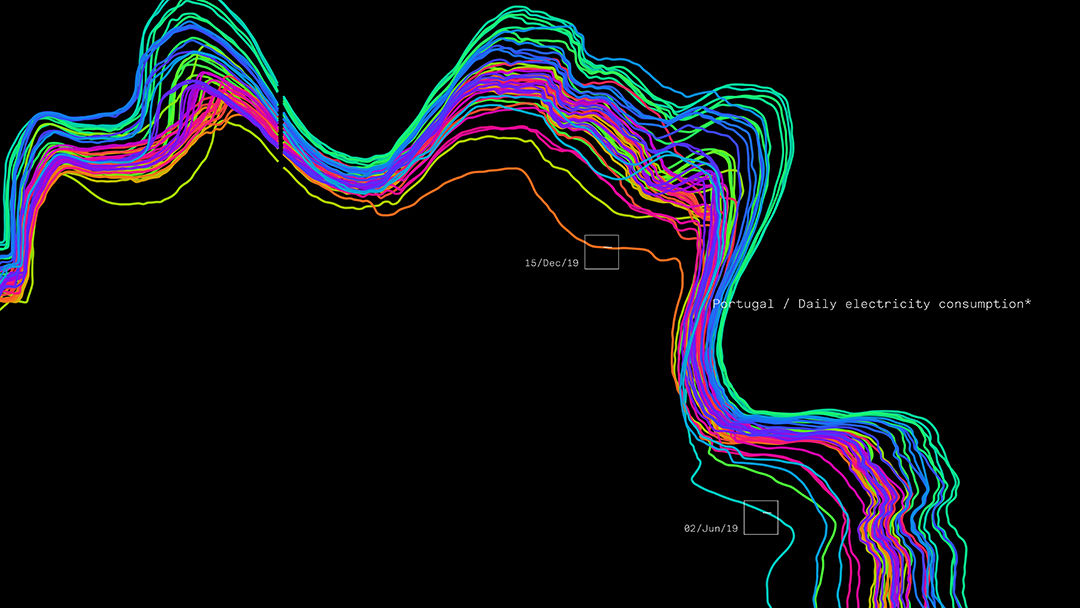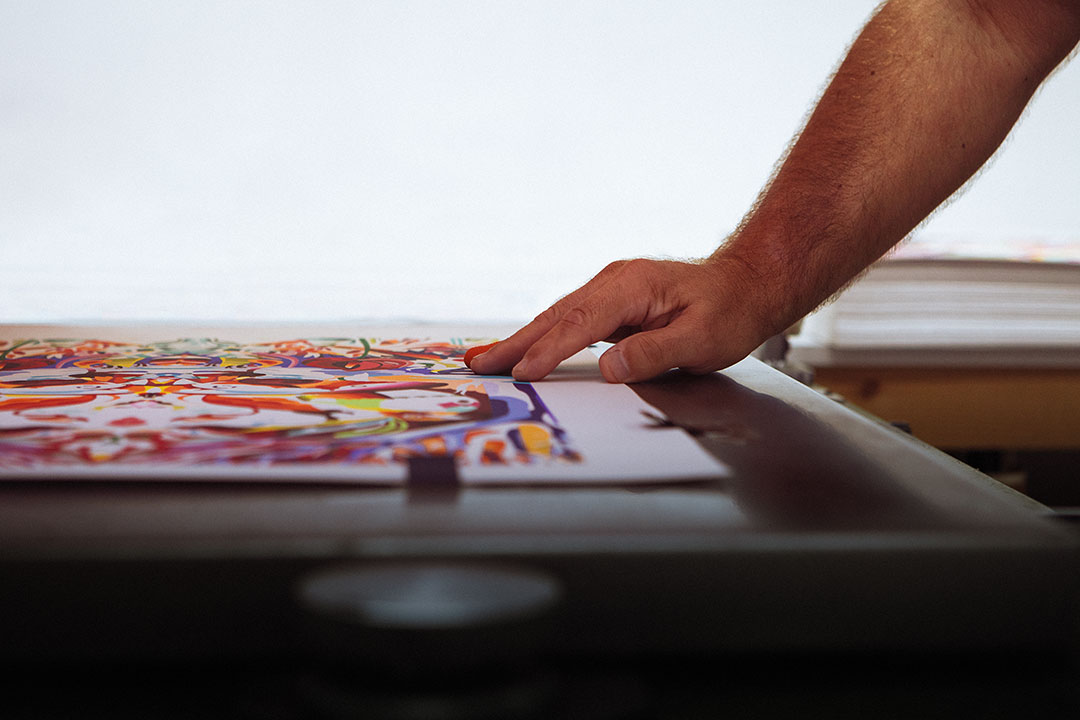
THE VALUE OF ART IS IN SHARING
A dance from colour to colour, between a work that already exists and another being put together at the same time. A dance between the artist who created the piece and the artist who prints it. A dance where the most outstanding art is knowing when to wait, sometimes a day, sometimes four months. How long this back and forth will take depends on the drawing’s complexity and nuance density. This is the thrilling alchemy of screen printing, the art of separating colours and bringing them back to life.
Apart from the intrinsic value of prints, what makes them worthy of letting a third party – the public – join the dance? What makes them truly valuable (and let’s not confuse value with price) to the prospective viewer? Might it be the possibility of sharing art, taking it out of the gallery and into the private sphere – our living room walls, where it grows in stature? This idea inspired António Prates in 1985 and led him to set up the Portuguese Printmaking Centre (CPS). From its opening, and until 2022, the CPS has already edited 3,000 works by 650 artists from more than 30 countries. The first technique used by CPS was screen printing, invented in China during the Sung Dynasty (between the years 960 and 1279) and popularised in the west through the triumph of Pop Art.

It was initially used in works by Manuel Cargaleiro (b. 1927) and Cruzeiro Seixas (1920-2020), who became the best-represented artist in CPS’ output. Screen printing was later joined by engraving and lithography, followed by digital printing and photography in the new millennium. These prints are no mere copies or reproductions, as João Prates, the centre’s director, explains: “They belong to the international canon of original print works. In other words, the artist creates an original piece for the intended type of printing, working directly on a block of stone, in the case of lithography, or on wood, linoleum, metal or acrylic plate in engraving, or creates a design for screen printing.
The printing relies on the experience and skill of our master printers.” Once ready, each print is numbered and signed by the artist as part of a one-off limited edition. The publisher’s embossed stamp is the guarantee of authenticity. How does the work reach its audience? Through a “unique system of monthly subscriptions” offered by CPS to its 15,000 members. The price charged for each edition “is agreed with the artist, in line with the standing in the art market”. It also reflects the piece’s size, print run and technical complexity. João Prates stresses the significance of the prints being affordable: “Attaching value to what matters most in art, its cultural relevance” in the context of a “throwaway society”.
TON SUR TON
Screenprinting uses a nylon mesh stretched over a rectangular frame. Using the original design created by the artist, each colour is separated and redrawn on high-contrast acetate film in black and white. The film is then overlaid on the sensitised frame and exposed to ultraviolet light. The black areas block the UV rays so that, under the pressure from a rubber blade, the ink passes through the mesh and reaches the paper in the open areas. This process is repeated for each colour.

AN AGELESS MASTER
It was with Humberto Marçal, one of Portugal’s leading contemporary printmakers, that engraving and lithography were established at the Portuguese Printmaking Centre. Marçal has wisely succeeded in passing on his skill to younger generations (his son is following his footsteps), although he is hard-pressed to remember how he learned so much: “I was born a lithographer. I was 16.” He started with a bursary from the Gulbenkian Foundation to study at the Royal Academy of Fine Arts in Liége (Belgium). Traineeships followed in Paris and Barcelona. In Portugal, he was responsible for artistic engraving and lithography at Sociedade Cooperativa de Gravadores Portugueses and worked in the prints restoration department at the Calouste Gulbenkian Museum. Ask him what he does, and he will answer who he is: “I am a print restorer, I am a lithographer, I am an engraver, I’ve been a teacher of special techniques… a string of adventures and sharing my life with them.”
Humberto Marçal is one of leading contemporary printmakers in Portugal.
He is not counting the years since he joined the centre because, like art, he is “ageless” and feels privileged to have spent a lifetime surrounded by ink and paper. His only wish is that more people would visit the print studio, “not just for their benefit, but also to attach more value to the work we do here by hand.”




INVESTING IN THE FUTURE
New times, new audiences, new ways of consuming art. Without compromising its identity, the Portuguese Printmaking Centre is keen to innovate: “We’ll soon be presenting pieces created with the help of artificial intelligence by the US artist Ken Rinaldo, a pioneer in technology. In 2021, we presented NFT editions by Leonel Moura, publishing his robot-created engravings, prints, and an augmented reality print.
Work is underway on the use of 3D printing in the future. In other words, CPS preserves the traditional techniques but is also incorporating new technologies in its work”, says João Prates.
Machine Beauty (2021), by Leonel Moura. It is both a NFT and a digital print on photographic paper.
In November 2022, the centre was represented at FIG Bilbao (Grabado International Festival), exhibiting Saramago’s Women, a commemorative album for the centenary of José Saramago (1922-2010), the Portuguese winner of the Nobel Prize for Literature. Created in partnership with the José Saramago Foundation, the album comprises six screen prints and previously unpublished engravings by Portuguese artists, accompanied by texts, also previously unpublished, by Portuguese writers “of different sensibilities and generations”. CPS feels like the right place for this encounter between different forms of artistic expression.
